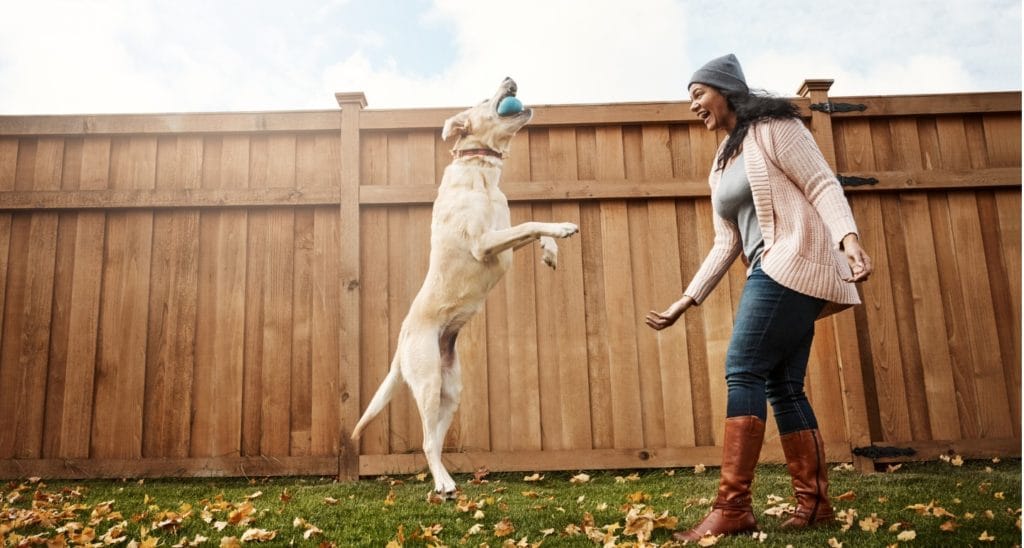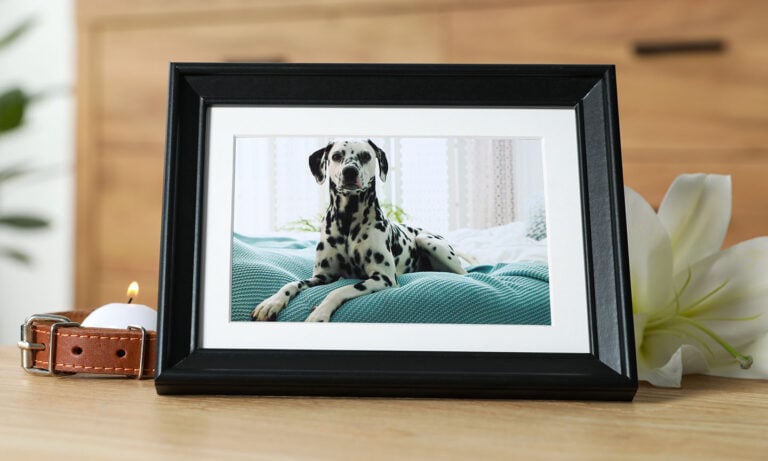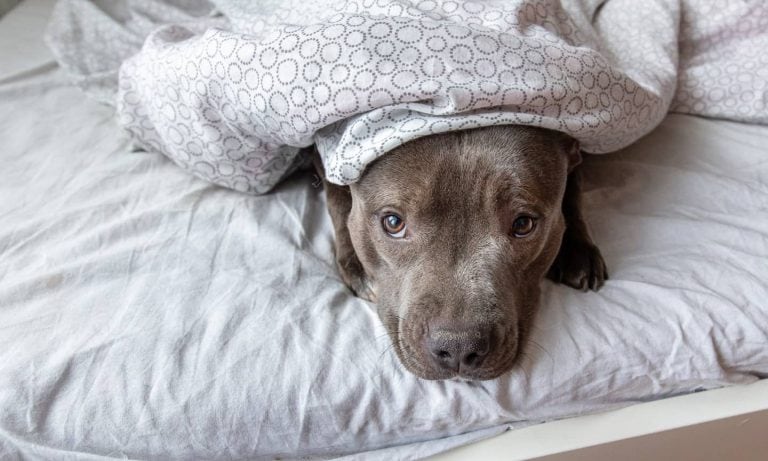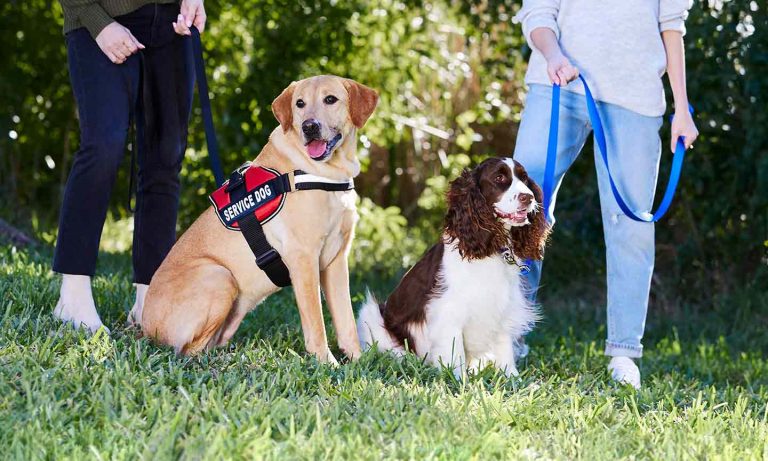Dogs bring joy to our lives with their unconditional love and pleasure in simple things. But mentally, dogs are more complicated than many people think. In a 2013 study on the canine brain, Emory University scientists concluded that dogs’ brains bear some striking similarities to ours, particularly when it comes to emotions. When it comes to mental health, dogs are more like us than you may think.
Like people, dogs can experience stress, anxiety, depression, grief and other mental and emotional issues. But unlike people, they can’t tell us how they’re feeling or seek help. So how can we tell if our dogs are suffering? And how can we help them?
1. Learn to Spot Signs of Distress
The first step is learning to recognize signs of anxiety, depression, stress in dogs. According to Tiffany Talley, certified behavioral consultant and dog trainer at All Things Canine in Tulsa, Oklahoma, unusual behavior is a red flag.
“The behaviors that usually cause people to come to me are interfering with the dog’s quality of life,” she says, including “a dog that doesn’t eat, seek attention, won’t go outside, can’t rest or can’t do their normal daily routine.”
Sometimes, however, the signs won’t be that obvious. Dr. Erica Feuerbacher, a certified animal behavior analyst and dog trainer, says that some dogs can have very subtle signs of stress. Compulsive licking is one indication of stress or anxiety, she says, as is “whale eye,” when dogs show the whites of their eyes during an interaction. Feuerbacher also advises keeping a close watch on dogs who lose a companion, as they do experience grief, which may lead to depression.
Please note that if you observe significant behavioral changes in your pet, you should schedule a veterinary appointment as soon as possible.
2. Exercise Your Dog
Any veterinarian will tell you that one of a dog’s most underserved needs is exercise.
“Exercise is great since it helps bond the dog to the human in a positive activity,” Talley says. “[Even] ten minutes of quick play can help a dog relax and calm for a few hours.”
Some exercises Talley suggests include walking, running, hiking, playing games, and running up and down stairs together. Be sure to take your dog for a check-up before engaging in strenuous activity.
While any kind of exercise is certainly good for your dog, Feuerbacher stresses the unparalleled mental benefits of the great outdoors.
“There’s sort of a trend for getting things like treadmills so dogs can just exercise in the house,” she says, “[but] taking your dog on a walk is so much more than that. They’re using their nose, and getting so much other stimulation.”
3. Provide Mental Enrichment
“My number one recommendation to improve any dog’s life is enrichment,” Talley says. Enrichment comes in many forms, she says, including taking a walk, riding in the car, going to a park, playing games, having a play date with another dog, obedience training or enrichment toys or dog puzzle toys.
Dogs experience boredom just like humans, and a lack of proper enrichment can lead to anxiety and destructive behaviors.
“If your dog is tearing things up or chewing on your favorite shoes, that indicates that your dog needs more outlets for its energy,” Feuerbacher says. She likes to employ “nose work,” where dogs use their noses to track a scent.
While puzzle and enrichment toys promote nose work, you can create your own games, too. “Even just hiding their dog food around the house so that it’s not simply given to them out of a bowl – that’s stimulating, because they’re looking and moving around,” she says.
4. Try Massage and Body Awareness
Another way dogs are like humans? They love a good massage. Go to a class and learn how to massage your dog, Feuerbacher suggests, or use an online tutorial – just make sure you’re using a vet-approved resource. Another similar treatment for general anxiety in dogs is body awareness.
“Body awareness is teaching your dog where its hind end is, and helping them become aware of what [it’s] doing,” she says. “We will sometimes put a body wrap on them, like an Ace bandage, so they can actually feel where their body is. And anecdotally, people and their dogs that have that interaction find they’re a little less anxious.”
To try this strategy, look for dog trainers in your area that offer body awareness, strength training or conditioning classes.
5. Give Your Dog Space
When we see our beloved dogs unhappy, it’s tempting to smother them with concern and constant activity. But helicopter parenting can make dogs more anxious.
“We want to give our dogs everything,” Feuerbacher says, “and not all dogs are equipped to handle that.”
She advises against bringing your dog on excursions to busy places like the farmer’s market, which can be too overwhelming. And while interacting with other dogs can be healthy for our pets, if you have an anxious dog it’s sometimes necessary to avoid dog parks or busy areas.
“If walking the dog in public causes them anxiety,” Talley says, “I will have my clients walk them in no-traffic areas so they don’t have to encounter other people or dogs.”
Having people over? A stressed-out dog needs a place to retreat. “If you can carve out a little space for your dog, like a crate they can go into for alone time, that might be helpful,” Feuerbacher suggests.
6. Find Out What Your Dog Loves
Especially when a dog is suffering from depression or grieving, Feuerbacher says, “I normally give similar advice to what we give humans, which is to get them out, do things that they enjoy, teach them how to entertain themselves.”
One strategy for curtailing your dog’s blues is to encourage activities he or she finds fun. You can observe a dog’s behavior gauge enjoyment, but if you’re struggling to identify appropriate activities, it never hurts to contact a dog trainer or behavioral consultant.
“If that dog loves to go on walks, I say take them somewhere new [for] new smells and sights. If that dog loves to chase things, we can play fetch. If the dog loves to please, we work with them adding new obedience or fun behaviors. If a dog loves to chew, we find puzzle dog toys to stimulate them to use their mouths,” Talley says. “The item or activity has to be important to that specific dog.”
Maura McAndrew is a freelance writer based in Oklahoma. She also writes for Paste Magazine and HelloGiggles.
Share:











